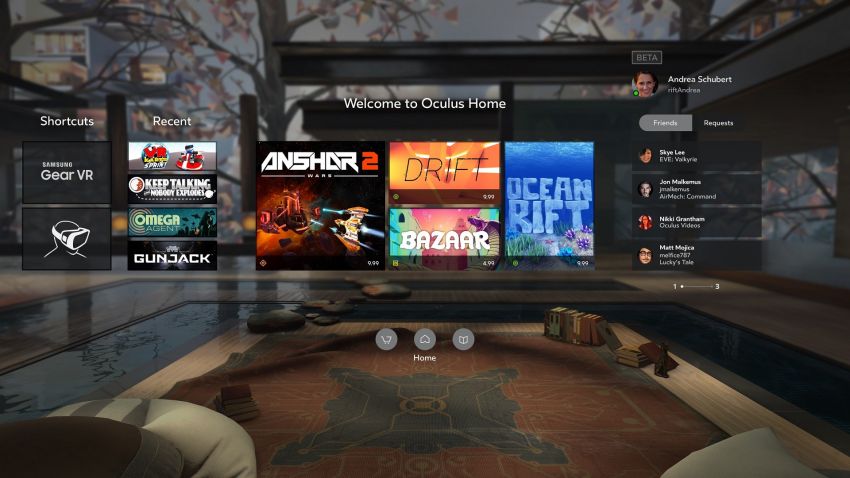The usual appointment with the oculus rift Connect , the annual event in which the company owned by Facebook meets the developers and reveals new products and services, this year has been characterized by numerous innovations in the field of hardware.
Oculus Go is indeed on its way home and will be the first completely autonomous viewer produced by the company founded by Palmer Luckey, while the Santa Cruz wireless headset has been shown in a much more advanced form than the last edition, representing in fact the the link between the mobile band experiences and the viewers connected to a PC.
Finally, even with a minor echo, oculus rift core 2.0 was announced : and its components, reviewed in every aspect and currently available to the public in beta.
Evolution, not revolution
The Oculus software is divided into three macro components, all revised and corrected in this second iteration, released about a year after the launch of the Touch controllers .
This is a necessary update: in fact, despite Rift was marketed in bundles with a small enough intuitive remote control and an Xbox One controller, over time the motion control has completely changed the perception of the game experience in virtual reality.
A few months after the release, on the other hand, the pair of Touch controllers has become the most used input system on Rift: in this way, even the interface of the tools needed a decidedly updated approach, above all thanks to the numerous steps forward made by the competition.
The pocket pc was then reworked and made more functional , and even the store has been redesigned from the foundations, especially now that the games and applications for VR have now reached a number all relevant, an aspect that could make a little ‘more difficult to navigate the menu, in order to find the most suitable products to suit your tastes.
It was then slightly revised the process of configuring the viewer once connected to the PC, in particular with the use of the third sensor that enables Room Scale Tracking, effectively equating Oculus’s offer with the Vive package produced by HTC.
The core of the Core 2.0 update is however represented by two features, namely Home and Dash . The first is the environment in which we will be transported once the display is worn and which acts as a ” virtual home “, as it houses all the installed software. The progress made by SteamVR must have convinced the Oculus team to an almost total revision of Home , and now the spaces are wider and completely navigable, with the possibility of interacting with objects and elements of the scenario.
The rooms can be radically modified, choosing the color of the walls, the material of the floors and even positioning the furniture and furnishings of various kinds.
Your home can be customized to the smallest detail, thanks to the possibility of downloading real digital settings, such as the city view in Gotham City style , able to provoke a curious sense of vertigo.
On the other hand, Dash represents the attempt to combine virtual space with the PC operating system that is generating it. Just press a button and the Windows desktop will then appear in front of us, as if it were hosted on a monitor of gigantic size.
The movement of one’s hand is followed without any delay by the mouse pointer and we will have the opportunity to work on our PC in a fairly easy way, even if the virtual keyboard is obviously less immediate than the physical one.
On a purely functional level it seems that this first public beta of Core 2.0 is not yet fully optimized and even tracking, using the three-view Room Scale, seemed to us slightly less reactive than the previous software. Despite the similar first impressions, in any case, the hours spent climbing the walls of The Climb or crossing the icy snowy environments of Arktika.1 were able to give us back the usual degree of immersion that oculus rift nearsighted he always assured us.
Oculus rift core 2.0 release date
The Beta for Rift Core 2.0 is available for users to try now by opting into the Public Test Channel. The development team are seeking feedback from the Oculus Rift user community and have set up UserVoice, to allow users to provide feedback and vote on what new features and changes they wish the developers to focus on.

